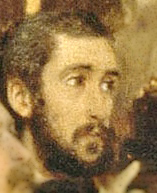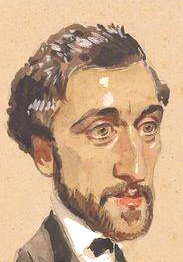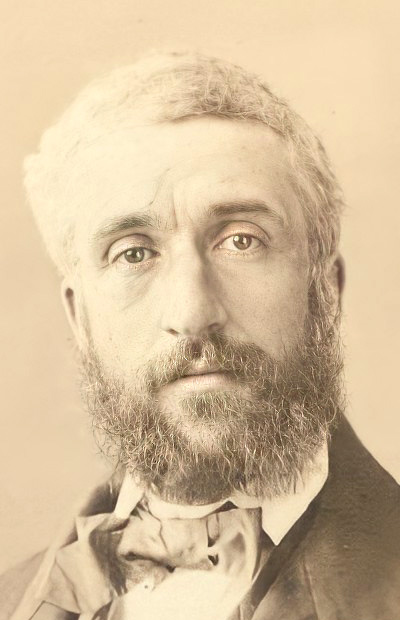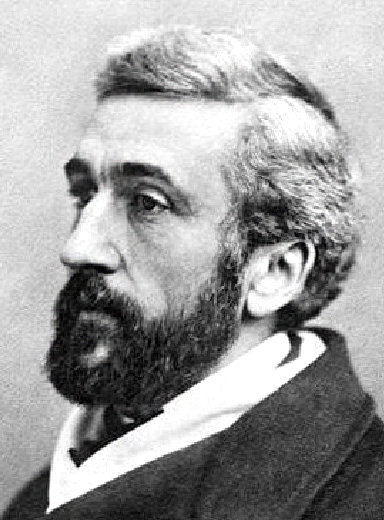Philippe-Francois Rousseau (1816 – 1887), painter
1st image: Soirée; 2nd: caricature by Giraud (c.1853); 3rd: by Nadar (1865); 4th: by Nadar (1871).
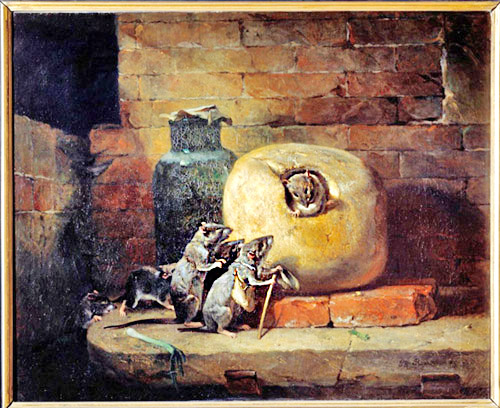
Philippe Francois Rousseau, a still life painter (from the Dutch word stil leven: “quiet life”), likely attended Nieuwerkerke’s soirée only once, between end 1852 and Spring 1854.
Philippe preferred a peaceful life in Acquigny, west of Paris.
His invitation likely followed the success of his painting Le Rat qui s'est Retiré du Monde, based on Jean de La Fontaine’s fable, at the Salon in June 1852.
Rousseau’s works, exhibited in museums globally (e.g., New York Met, Cleveland Museum, Amsterdam Van Gogh Museum, Paris Musée d’Orsay), are clouded by obscurity about his origins. He is often mistaken as the brother of Barbizon School founder Théodore Rousseau.
The confusion escalated when both were nominated for the Chevalier title of the Légion d’Honneur in 1852. The minister of Fine Arts hesitated, remarking,
“What, two Rousseau's? I cannot decorate them at once. Which is the elder? The younger brother's turn will come later.” Count de Nieuwerkerke16 quickly intervened, clarifying they were unrelated, and both received the honor on July 16, 1852.
My research showed that Philippe Rousseau was born in Paris’s ancient 3rd district, with second name Francois. It also revealed his mother gave him her surname because his father, celebrated tenor Philippe Cauvy (1754–1820), abandoned her after an affair. Cauvy starred in Gretry’s Richard Lionhart Opera in 1783, and retired in 1805. In absence of the father, Rousseau’s birth was recorded belatedly on 23 February 1816, leaving him to be raised by his single mother.
In later life, Philippe also resided in the 3rd district, at Place Breda (currently Place Gustave Toudouze), an area near Pigalle, known for its artists and women with a 'horizontal profession' (also referred to as Bredas).

(caricature by Giraud)
At age 14, Rousseau studied under painter Garneray, the first Peintre de Marine, who made him do errands. In Une Soirée au Louvre he is depicted in discussion with Morel-Fatio63, Garneray’s successor. Next, his mother entrusted him to landscape painter Victor Bertin who only taught him technique. He worked several months for Leopold Le-prince who understood Philippe's need to make money and helped him to increase his speed.
To ease his mother's financial strain, Philippe moved to Paris, making a living by copying paintings at the Louvre (e.g. Potter, Ruysdael) and restoring old portraits. When an Englishman requested a copy of a painting with a dog and pups, and was very pleased with the result, Rousseau started to make more animal and landscape paintings.
To his delight, his painting of a marsh in Normandy (painted from memory) was accepted at the 1834 Salon. Influenced by his revered still life painter Chardin, the king of realists, and with advice from Isabey75, he shifted to still life (natures mortes), occasionally painting landscapes only for friends.
At the apres-soirée of de Nieuwerkerke's event at the Louvre, Eugène Giraud11 caricatured Rousseau (with Legion d'Honneur boutonnière), comically depicting him while creating a nature morte scene. He attracts chickens with grains from his left hand, while holding one nature morte chicken under his right arm.
The 1855 Universal Exposition established his reputation when Baron de Rothschild purchased two still life’s for his dining room. Princess Mathilde and Alexandre Dumas also became patrons. Rousseau, “le genie de l’ecole francaise,” further gained popularity because of the engravings made of his works, allowing many to enjoy them. Manufacturer Beauvais adapted his designs for tapestry, chairs, and curtains.
Living at the Place Breda, music-lover Rousseau mingled with friends from the Opera-Comique, the place where his father sang, with painters like Isabey, Arago, and Delacroix10, musicians like Hermann-Leon, and writer Emile Augier53. Augier and Arago were among the group of friends that attended his funeral when he died of brain hemorrhage, in 1887. His collection of paintings, including also works from Chardin and Isabey, was sold at an auction in 1889, for a value of 32,000 francs (over 150,000 euro today).
